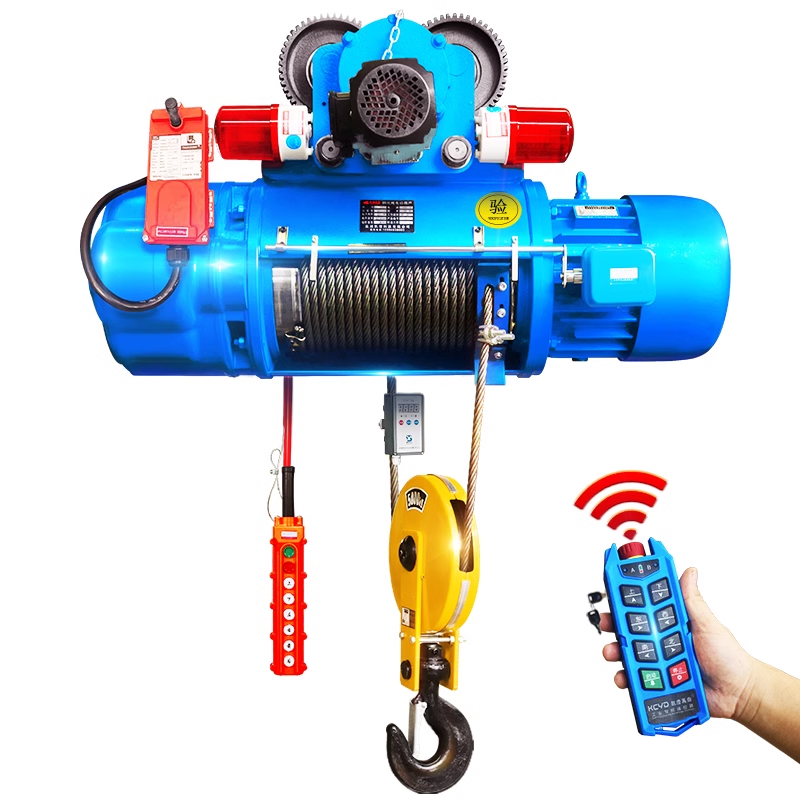Troubleshooting and Maintenance Guide for Chain Hoists:Core Manual to Ensure Safety and Efficiency in Lifting Operations

As a critical lifting device in industrial operations, chain hoists’ stable performance directly impacts workplace safety and production efficiency. However, prolonged use or improper operation may lead to chain jamming, motor overheating, brake failure, and other malfunctions. This article systematically analyzes the root causes of common issues, offers actionable repair protocols, and underscores the importance of routine maintenance and safety compliance.
Common Fault Phenomena and Troubleshooting Procedures
1. Chain Jamming or Failure to Lift/Lower
Phenomenon: Chain movement obstruction, abnormal noise, or sudden stoppage.
Troubleshooting Steps:
- Check chain lubrication: Insufficient lubrication or debris accumulation may cause jamming. Clean and relubricate with dedicated chain lubricant.
- Inspect sprocket wear: Replace the sprocket if teeth are deformed or worn.
- Calibrate load limiter: If overload protection is falsely triggered, adjust the load sensor or reset the overload protection switch.
2.Brake Failure or Load Drifting
Phenomenon: Hook fails to lock; load drifts downward slowly.
Troubleshooting Steps:
- Test brake springs: Replace springs if fatigue deformation or fracture is detected.
- Clean brake pads: Oil contamination or dust accumulation may reduce friction. Degrease brake discs and friction plates with anhydrous alcohol.
- Verify power voltage: Electromagnetic brake malfunction due to voltage instability. Stabilize power input within rated specifications.
3.Motor Overheating or Abnormal Noise
Phenomenon: Excessive motor surface temperature; abnormal noises (e.g., high-pitched friction sounds).
Troubleshooting Steps:
- Inspect cooling system: Clear dust from motor ventilation ducts and ensure proper fan operation.
- Bearing maintenance: Replenish high-temperature grease if lubrication is insufficient, or replace damaged bearings.
- Electrical fault diagnosis: Use a multimeter to test for short circuits in windings and check for loose ground connections.
Critical Maintenance Procedures
Chain Replacement Protocol
Steps:1.Release chain tension: Lower the hook to its lowest position and detach the end connecting link.
2.Remove the old chain: Following the manual’s sequence, disassemble the sprocket housing cover and extract the chain.
3.Install the new chain: Ensure proper alignment between chain links and sprocket teeth grooves, then adjust tension to specifications.
Brake System Reassembly
Key Notes:
Use only OEM brake pads to prevent mismatched friction coefficients.
Manually test brake response after assembly.
Perform multiple lifting/lowering cycles under no-load conditions to break in components.
Preventive Maintenance Plan
Daily Inspections
- Lubricate chain ONLY when dry: Apply lubricant only to a clean, moisture-free chain using manufacturer-approved grease.
- Test brake responsiveness (before each operation): Verify instant braking by engaging/disengaging the hoist unloaded.
- Inspect hook for cracks/deformation: Conduct visual inspection and tap testing (listen for abnormal acoustic resonance).
Monthly Comprehensive Maintenance
- Disassemble and thoroughly clean sprocket and gearbox assembly to remove debris and residual lubricant.
- Calibrate load sensor accuracy to OEM specifications using certified test weights.
- Inspect cable insulation for aging/deterioration. Replace immediately if cracking or brittleness is detected.
Critical Safety Protocols
1.Strictly prohibit overloading: Ensure all loads remain within the manufacturer’s rated capacity.
2.Power isolation for maintenance: De-energize, lock out, and tag all energy sources before performing any servicing.
3.No bypassing safety devices: Tampering with overload protectors, limit switches, or safety interlocks is forbidden.
When is Professional Repair Required?
1.Immediately Cease Operation and Contact the Manufacturer if Any of the Following Occur:
2.Motor emits smoke or burnt insulation odor.
3.Structural deformation (e.g., bent components) or cracked weld joints.
4.Control system triggers frequent false alarms.
Closing Statement:
The efficient operation of chain hoists relies on standardized procedures and scientific maintenance. Regular inspections, precision repairs, and strict adherence to safety protocols significantly extend equipment service life and prevent catastrophic failures.














